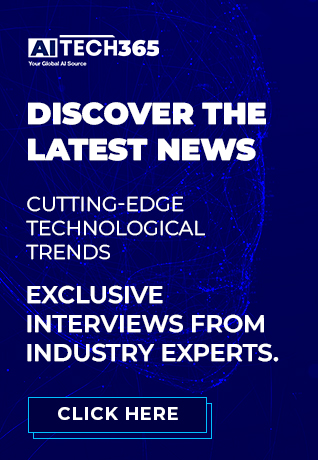Every business today claims to be data-driven, yet most are still stuck in the same loop. Dashboards light up, reports pile in, and meetings end with one predictable line, ‘Let’s analyze this further.’ That’s the decision gap, where insight dies before it ever becomes action. The truth is, traditional BI tools were built to inform, not to decide.
The real shift is happening now. AI-powered decision making is changing how organizations move from reading data to acting on it. It’s not about prettier charts or faster queries anymore. It’s about systems that interpret patterns, quantify outcomes, and execute the next logical move without waiting for human hesitation.
This playbook lays out the path to get there. It breaks the transformation into three practical phases, building the foundation, designing intelligent workflows, and codifying decisions into repeatable frameworks. Each stage helps close the gap between knowing and doing through true data-driven decision models.
And this isn’t theoretical. According to Google Cloud’s 2025 State of AI Infrastructure report, more than 70% of organizations are already seeing ROI from generative AI. The message is clear. Insight alone no longer wins. Action does.
Phase 1. Laying the AI Foundation & Governance
Every company talks about being data driven, but most forget that data isn’t automatically intelligent. It’s messy, duplicated, and often unreliable. Before building models or dashboards, the real work starts with the three V’s: volume, velocity, and the most ignored one, veracity. If your data isn’t trustworthy, every prediction turns into a fancy mistake. Cleaning, labeling, and validating data may not sound exciting, but it’s what separates companies that scale from those that stall.
Governance isn’t paperwork, it’s a habit. ModelOps keeps AI models monitored, updated, and compliant. Pair that with continuous Data Quality Monitoring so every incoming stream gets checked, flagged, and fixed before it breaks something downstream. One dirty dataset can throw off an entire decision process, and you won’t even see it coming.
Now to the tech stack. Old data warehouses can’t keep up anymore. Modern AI runs on data lakes and feature stores where raw and processed data stay consistent for both training and serving. That consistency turns analytics from static reports into living systems that actually learn. Add a solid MLOps layer and your models won’t just run in testing, they’ll survive in production.
Leaders are catching on. According to IBM’s 2025 CEO Study, global executives expect their AI investments to more than double within two years. If your foundation isn’t ready, you’ll be stuck watching others make the decisions your data should have made for you.
Also Read: The AI-Driven Enterprise: Key Predictions for 2026 and Beyond
Phase 2. Building AI-Powered Analytics Workflows
Dashboards were supposed to make decision-making easier, but most of them still stop at telling you what already happened. Descriptive analytics answers ‘what happened,’ predictive analytics guesses ‘what might happen,’ and prescriptive analytics finally steps up to say ‘here’s what to do about it.’ The goal now is simple: make that prescriptive layer the main view, not the afterthought.
Think of the modern analytics workflow as a four-step loop that runs quietly in the background while your team focuses on strategy. Detect what’s happening in real time across data streams. Analyze those events through models that assign context and priority, like risk levels or revenue potential. Recommend the next move with clarity, something direct and useful, like ‘increase budget by 10% on campaign X.’ Finally, Act by pushing that decision straight into systems like CRM or ERP so execution happens instantly without endless human approvals.
This loop isn’t just about speed, it’s about precision. Decision velocity, the time from event to action, is now a metric worth tracking. A next-gen AI dashboard should feel less like a report and more like a control panel that thinks. It should show you what’s happening, why it matters, and what to do next, all in one place. That’s where Explainable AI comes in, adding short, human-readable ‘why now’ notes beside every recommendation so no one’s left guessing.
Complex charts and data walls are becoming outdated. Instead, users need clean interfaces with built-in action buttons that let them decide, confirm, or automate on the spot. It’s about collapsing the gap between insight and execution until decisions happen almost as fast as the data itself.
And this shift is already underway. According to Microsoft’s 2025 Work Trend Index, 89% of organizations say they’ll have AI agents working as digital team members within the next 12 to 18 months. That’s not a future trend, it’s a warning shot. Workflows are becoming intelligent, and teams that cling to static dashboards will end up reacting while others are already acting.
Phase 3. The Decision-As-Code Framework
AI can crunch data, but true transformation starts when decisions themselves become programmable. That’s the idea behind Decision-As-Code (DaC), turning business logic and AI model rules into a structured system that runs like software. Instead of every team interpreting data differently, the DaC framework locks decision logic into a central, auditable source of truth. This DaC repository manages version control, logs every change, and keeps both AI-driven and human decisions transparent. No more mystery around why a system made a call, every rule and rationale stays traceable.
But automation without oversight is a fast track to chaos. That’s where the Ethics and Bias Checkpoint comes in. Models drift over time, so Model Drift Monitoring must be constant to catch degrading performance early. Bias audits should be regular practice, testing models against fairness benchmarks across all customer and demographic groups. It’s not about ticking compliance boxes; it’s about keeping trust alive in every automated choice.
Even with strong AI pipelines, not every call should run on autopilot. The Human-in-the-Loop (HIL) strategy defines when to hand over control and when to step in. Low-impact decisions can run automatically, but high-stakes or unfamiliar scenarios still need human judgment. This balance keeps efficiency high without giving up accountability.
Finally, measuring success has to move past ROI. Companies now track Decision Quality Score (DQS), how often AI-led actions lead to desired outcomes, and Decision Latency, the time it takes to move from insight to execution. Together, they show whether your AI is not just working, but working wisely.
And the potential is massive. According to McKinsey’s 2025 report The Next Innovation Revolution Powered by AI, global organizations could unlock between US$360 billion and US$560 billion every year by using AI to accelerate innovation. That’s what happens when decisions stop being meetings and start being code.
Continuous Improvement and Scaling
Every great AI system rests on three solid pillars. First, a strong data foundation and governance, where data quality, consistency, and clear ModelOps keep models honest. Second, AI-powered analytics workflows, built to detect, analyze, recommend, and act with speed. And third, Decision-As-Code, where every rule, bias check, and human oversight point is structured for repeatable intelligence. Together, they form a cycle that keeps learning, scaling, and improving toward true data-driven decision making.
Now comes the part where theory meets action. It is recommended to begin with a small but strategic approach. Choose a pilot project that carries low risk and measures the impact well, establish performance metrics that are clear, and determine your Human in the Loop (HIL) limits ahead of time. Make a decision about tasks that can be completely automated and areas where human involvement is still relevant. The initial three months should focus on confirming value, demonstrating dependability, and creating a positive atmosphere for larger distribution.
This doesn’t concern the ceaseless accumulation of data or making dashboards more attractive. The real competitive edge is decision speed, how fast and assertively your company transitions from observation to action. The winning firms will be those that convert AI into a daily operating rhythm, not a lab experiment.
As highlighted in the World Economic Forum’s January 2025 report Advancing AI Transformation, its new Industries in the Intelligent Age series provides a roadmap for how both businesses and governments can adopt and scale AI responsibly. The message is clear, progress belongs to those who act, learn, and adapt faster than the rest.





